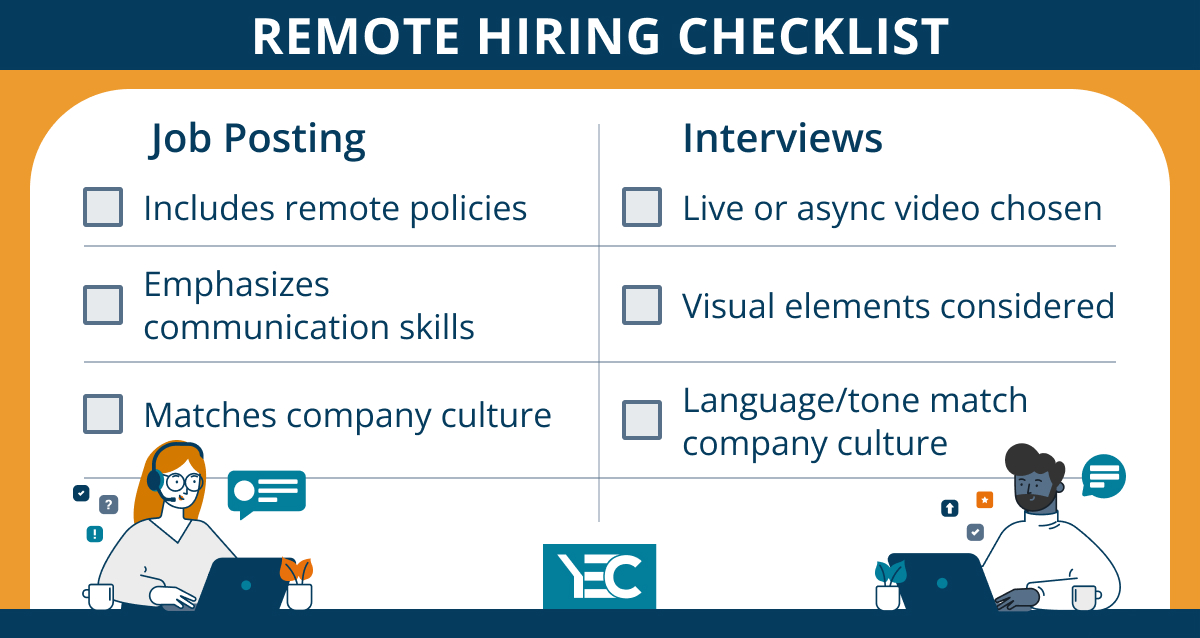
Remote Hiring Practices for Optimal Company Culture
So you’ve taken your company remote, either in response to the pandemic or because you realized it’s just good business to recruit from everywhere and keep your team happy.
Now you’re responsible for a business that is spread far beyond the walls of an office, and your company culture is dependent on communication via technology.
Although it’s absolutely possible to sustain a strong company culture remotely, leaders of remote teams face the challenge of communicating that culture to candidates and new hires without handy in-person interviews and water cooler chat.
How do you do it?
The key, according to YEC member Trivinia Barber, is to infuse your hiring and onboarding with humanity. Because job candidates are being choosier now, the hiring process must treat each person as a person rather than just a resume. “By humanizing your hiring process, you set candidates up for success by giving them peace of mind that they are working with a credible company. … Your candidates will feel relieved to know they are finally applying with a company that is willing to consider them as real people — not just an application,” she says.
How are you at making candidates feel valued and respected? Let’s take a look at your job postings and interviews to make sure you and your new employees see each other for who you are — people.
Job Postings
Have you refreshed your job postings lately? If you’re reading this article, we’ll assume you are avoiding demeaning and ridiculous job demands. But do your postings reflect any changes you have made since the pandemic in remote work, communication, and culture?
YEC member Kailynn Bowling, co-founder of ChicExecs PR & Retail Strategy Firm, points out that remote work details should be front and center in a job posting: “Emphasize that this is a remote job! This will open up your candidate pool. You should also include any work-from-home requirements, such as Wi-Fi, a laptop, cell phone, etc.” She also likes to include a short video in job postings, as it “can quickly communicate your culture and what you’re looking for.”
In addition to clarifying remote procedures and requirements, double down on communication skills. YEC member Lane Campbell, co-founder of PAEAN, says entrepreneurs should ensure that a job description includes communications skills and expectations, not just technical skills or general responsibilities. This is even more true in a remote setting, when communication must be on point to ensure things get done (without the handy ability to stick your head into someone’s cube to see how they are coming along).
Finally, make sure the tone of your job description matches your company culture. A fresher, less formal, more human tone is more likely to catch the attention of candidates. Big corporations still use very formal language in job descriptions, and while that may be technically correct, it misses an opportunity to connect with your prospects as humans. Let your job posting reflect what life is like in your company — don’t be afraid to use humor and offer insight into how your team communicates internally.
Interviews
Next, evaluate your interview process.
The pandemic forced everyone, sometimes on short notice, to convert what would have been live interviews to Zoom calls. As the danger passes, many companies are returning to in-person interviews, but others are embracing the video interview process. Fully remote or hybrid remote companies, of course, have to interview remotely.
As with any tool, there are good ways and not-so-good ways to conduct video interviews. Best practices can help you get the most from a video interview.
First of all, remember that not all video interviews have to be live. YEC member Miles Jennings, founder of Recruiter.com, recently shared best use cases for both live video interviews and asynchronous video: “Live video works well for later stages of the hiring process when you need to hold in-depth conversations with short-listed candidates. Early on in the process, however, live video might be overkill. After all that time spent aligning schedules and setting up a Zoom room, you might find out five minutes into your first conversation that this candidate isn’t a fit.” Miles suggests asynchronous video screenings to start the process, in which your candidate records themselves answering a list of questions.
Once you’ve decided on a live interview, consider what the candidate sees when you first pop onto that Zoom call. Is your background a blank wall, or does it give some hints as to your personality and the vibe of your company? Are you dressed the way you would expect your team to be dressed on calls?
Finally, take stock of your language. Are you very formal or very informal? Either could be a turnoff for some candidates. Just as you’re trying to get a sense of the person on the other end of the call, so they are trying to get a sense of you. Casual mentions of pop culture, mentors, or important influences can give great insight into personality. Don’t be afraid to be real.
And that, really, is the essence of hiring with culture in mind. Let your candidates see what you, and your company, are really like, at every step. They want a good match, too. From the job posting through the interview process, if they feel that they’re connecting with a real human being, they are more likely to feel comfortable being real with you, too.

